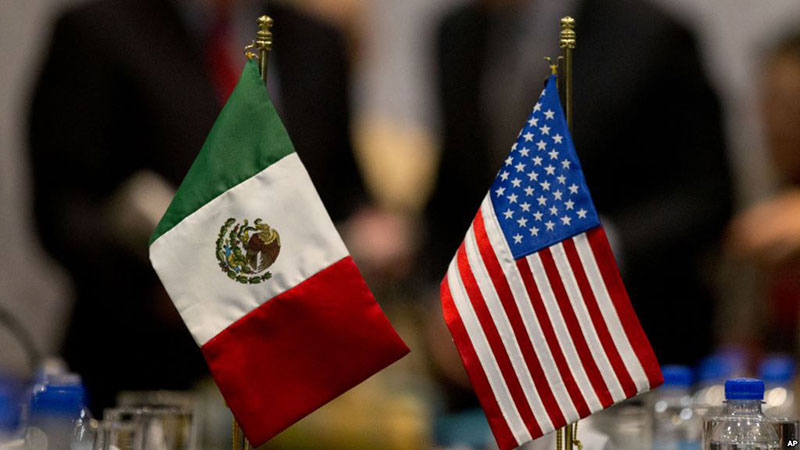By Stephanie Bryant-Erdmann, USW Market Analyst
USDA reported state planted area statistics for hard red winter (HRW), soft red winter (SRW) and soft white (SW) winter wheat in its Jan. 12 Winter Wheat and Canola Seeding Report. At this week’s Wheat Quality Council and Plains Grains Inc. board meetings in Kansas City, MO, however, HRW producers shared state updates of crop conditions, soil moisture conditions and planted area. A summary of what we learned from the producers supplemented with current USDA data by state follows.
Colorado. Colorado farmers planted 891,000 hectares (2.20 million acres) of wheat in the fall of 2016, down 6 percent from 2015. Farmers reported that southeast Colorado planting conditions were very dry, but the rest of the state had ample moisture. According to USDA data, topsoil moisture is short or very short for 35 percent of the state, compared to just 22 percent short or very short at the same time last year. Subsoil moisture is 42 percent short or very short across the state compared to 23 percent last year. Farmers noted warm weather has pushed the crop 7 to 10 days ahead of normal across the state, which makes it more vulnerable to late frost damage. On Jan. 30, USDA rated 36 percent of Colorado winter wheat in good to excellent condition compared to 47 percent good to excellent when the wheat went into dormancy last fall.Kansas. Farmers reported western Kansas is very dry. Subsoil moisture is rated at 41 percent short or very short, compared to 22 percent last year. USDA rated 37 percent of topsoil moisture as short or very short, compared to 19 percent in 2016. Early planted wheat established good stands last fall, but later planted wheat condition is more uncertain. On Jan. 30, USDA rated 45 percent of winter wheat as good to excellent compared to 52 percent good to excellent reported on Nov. 28. Last fall, Kansas planted 3.00 million hectares (7.40 million acres), down 13 percent year over year and the lowest planted area in 60 years.
Montana. Last fall, wet field conditions prevented some wheat planting in Montana. With a poor outlook for winter wheat prices, strong competition from peas and lentils shifted more acres in Montana. They planted 770,000 hectares (1.90 million acres) of wheat in 2016, down 16 percent from 2015. Farmers noted normal crop development and sufficient soil moisture, though some areas had below normal snow cover that increased the risk of winterkill. USDA rated topsoil moisture supplies at 13 percent short or very short, 77 percent adequate and 10 percent surplus, compared to 17 percent short or very short, 79 percent adequate and 4 percent surplus last year on the same date. On Jan. 30, USDA rated 70 percent of Montana winter wheat in good to excellent condition compared to 77 percent good to excellent when the wheat went into dormancy last fall.
Nebraska. Farmers reported good stands last fall, but western Nebraska is dry. The last measurable precipitation for that region occurred on Christmas day. USDA rated subsoil moisture supplies at 31 percent short or very short, compared to 19 percent on the same date last year. Topsoil moisture supplies are 23 percent short or very short, compared to 14 percent last year. With wheat now 5 to 7 days ahead of normal, the Nebraska crop is also more vulnerable to late frost damage. USDA rated 47 percent of Nebraska winter wheat in good to excellent condition on Jan. 30, compared to 53 percent good to excellent last November prior to dormancy. Nebraska farmers planted 441,000 hectares (1.09 million acres) of wheat in 2016, down 20 percent from 2015 and the lowest planted area on record for Nebraska.
Oklahoma. Most of Oklahoma received precipitation over the last few weeks that prevented further depletion of soil moisture, but it was insufficient to alleviate drought conditions. USDA rated topsoil moisture supplies at 38 percent short or very short compared to 60 percent short or very short last year. Subsoil moisture supplies are 56 percent short or very short, compared to 70 percent one year prior. Farmers noted wheat development is 12 days ahead of normal making it more vulnerable to late frost damage. Oklahoma farmers planted 1.82 million hectares (4.50 million acres) of wheat in 2016, down 10 percent from the prior year because late-season rain prevented some wheat planting. USDA rated 33 percent of Oklahoma winter wheat in good to excellent condition on Jan. 30, compared to 53 percent good to excellent when the wheat went into dormancy last fall.
South Dakota. Beneficial moisture last fall allowed for good stand establishment in South Dakota. Abundant snow cover is protecting the wheat and limiting winterkill risk. Topsoil moisture supplies rated 84 percent adequate, compared to 79 percent adequate last year. Subsoil moisture supplies rated 23 percent short to very short, 76 percent adequate and 1 percent surplus compared to 26 percent short or very short, 72 percent adequate and 2 percent surplus in 2016. USDA rated 62 percent of South Dakota winter wheat in good to excellent condition compared to 51 percent good to excellent when the wheat went into dormancy last fall. South Dakota farmers planted 364,000 hectares (900,000 acres) of winter wheat, down 24 percent year over year.
Texas. Last fall, Texas farmers planted 1.82 million hectares (4.50 million acres) of wheat, down 10 percent from the prior year in very dry field conditions. In the past two years, Texas planted wheat area has dropped by 20 percent. Early planted wheat emerged last fall, but the later planted wheat did not emerge until after beneficial precipitation fell in December. Farmers estimate the earlier planted wheat is 7 days ahead of normal development, while the later planted wheat is still emerging. USDA reported 93 percent of winter wheat had emerged by Jan. 30. On Jan. 30, USDA rated 29 percent of Texas winter wheat in good to excellent condition compared to 41 percent good to excellent when the wheat went into dormancy last fall.
USDA will release its next crop progress update Feb. 28 and will resume weekly crop condition reporting April 3.





